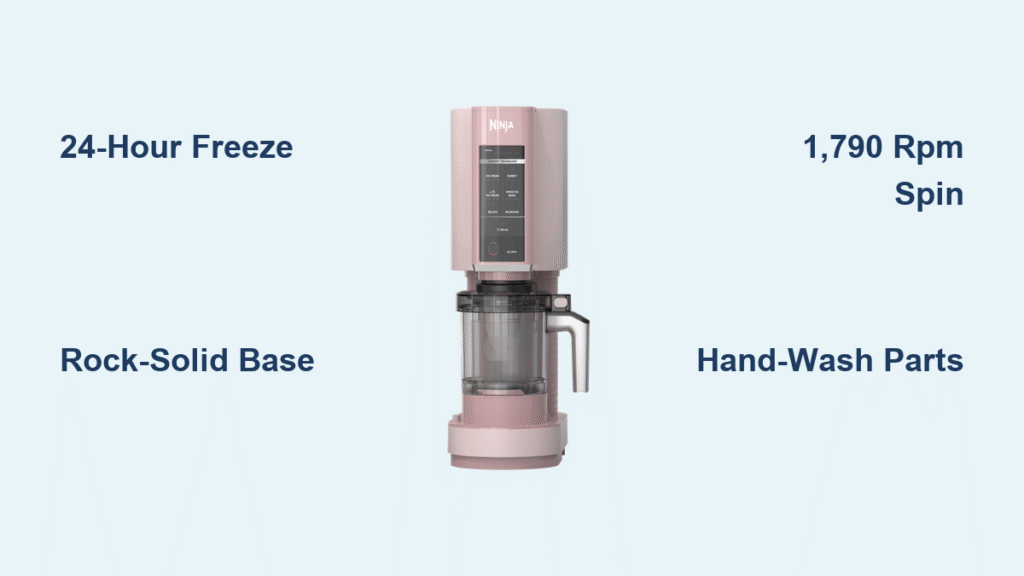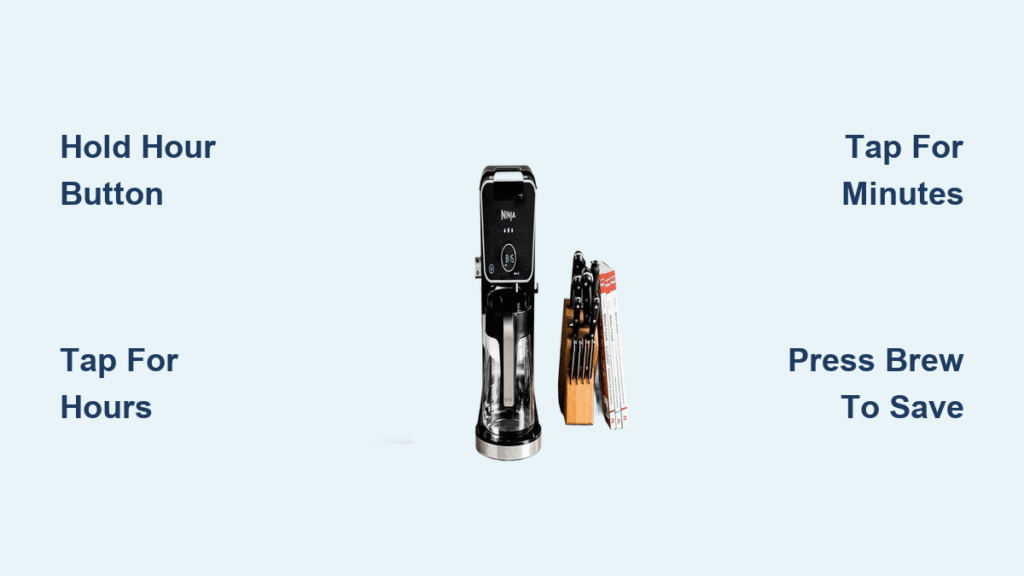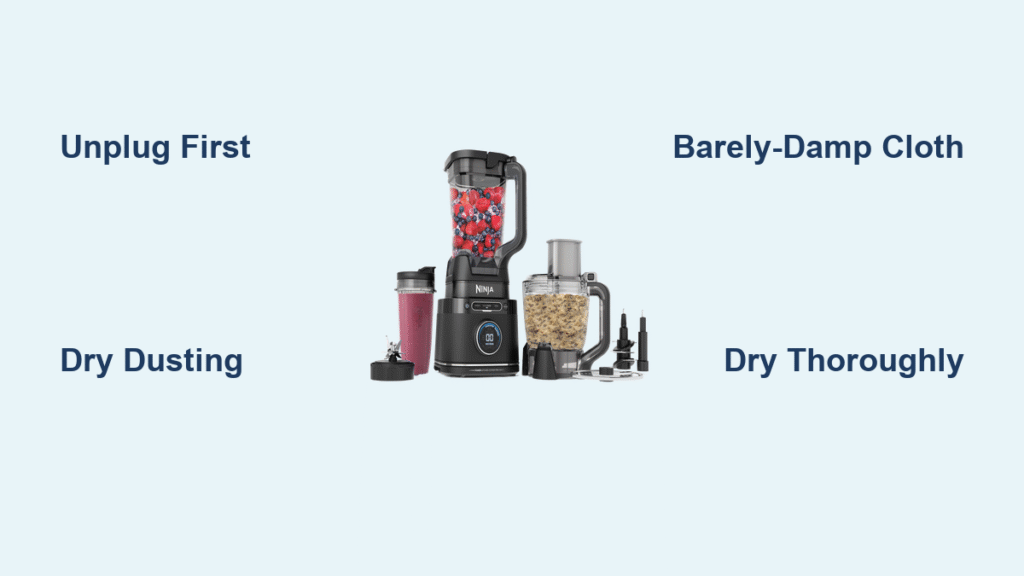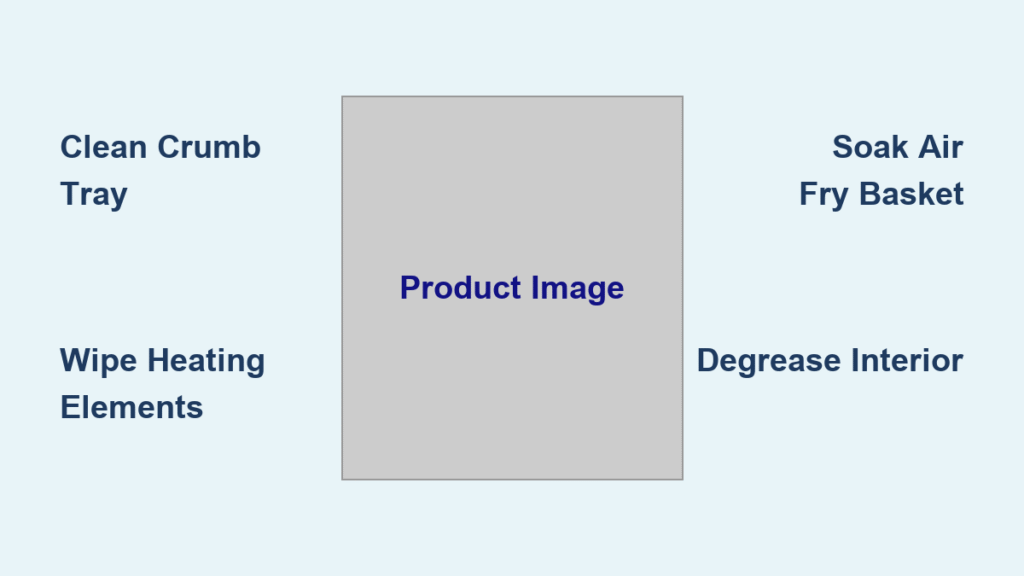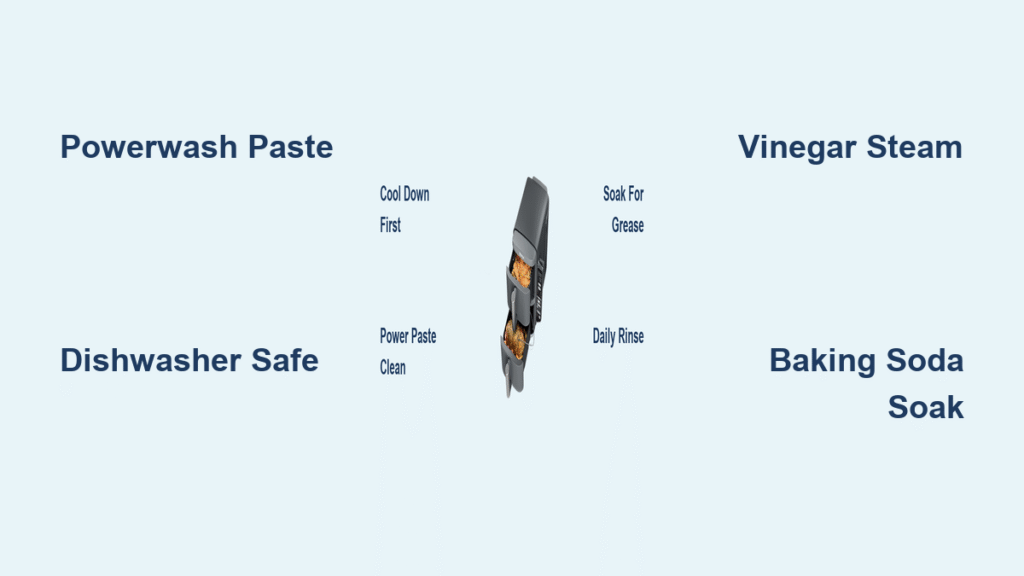You pull a rock-hard pint from your freezer, lock it into the Ninja Creami, and 90 seconds later—smooth, spoonable ice cream emerges. No pre-chilling. No waiting. This magic defies everything you know about ice cream making because the Creami works backward: it freezes first, then spins. Traditional machines churn liquid while freezing over 20-40 minutes, but the Creami’s secret lies in transforming completely solid frozen bases into ready-to-eat desserts through microscopic ice crystal engineering. Discover why your freezer needs 24 hours of prep time, how a 1,790 RPM blade creates imperceptible crystals, and why skipping the freeze protocol guarantees icy disappointment.
Why Your Ninja Creami Must Start With Rock-Solid Frozen Bases
Traditional ice cream makers fail if your mixture isn’t cold enough. The Creami requires your base to be frozen solid at 0°F to -6°F for a minimum of 24 hours. This creates a uniform ice structure throughout the pint—critical because the machine doesn’t freeze; it micro-shaves. When the blade descends at 1,200-1,790 RPM, it shaves crystals smaller than 25 micrometers (one-third the width of a human hair), instantly transforming the block into creamy texture.
What Happens If You Rush the 24-Hour Freeze?
- 8-12 hour freeze: Creates temperature gradients—soft centers resist spinning while icy edges won’t incorporate
- Visible domed surface: Freezing with the lid on causes a hump that strikes the blade mid-spin
- Result: Crumbly texture requiring multiple Re-Spins and milk additions you shouldn’t need
Pro Tip: Place your freezer thermometer inside the Creami pint during freezing. If it reads above -10°F, your results will be grainy regardless of spinning technique.
How Temperature Shifts During Spinning Dictate Texture

Each spin cycle significantly warms your pint—by 46-50°F during the first spin and 37-39°F during Re-Spin. This explains why texture varies dramatically based on your target:
Critical Spin Cycle Outcomes
- First Spin (Ice Cream/Gelato): Reaches 14°F (-10°C)—ideal for immediate serving but may have icy edges
- Re-Spin: Warms to 21°F (-6°C), creating softer texture that often needs 1-hour refreeze
- Two Re-Spins: Typically produces soup-like consistency requiring full refreezing
Why This Matters: Your recipe’s sugar content must match your target temperature. Bases balanced for 14°F need 18-22% sugar (vs. 16-20% for traditional machines). Use an online ice cream calculator and set “Serving Temp” to -10°C for single-spin success.
Ninja Creami Parts That Actually Matter (Not What Marketing Claims)
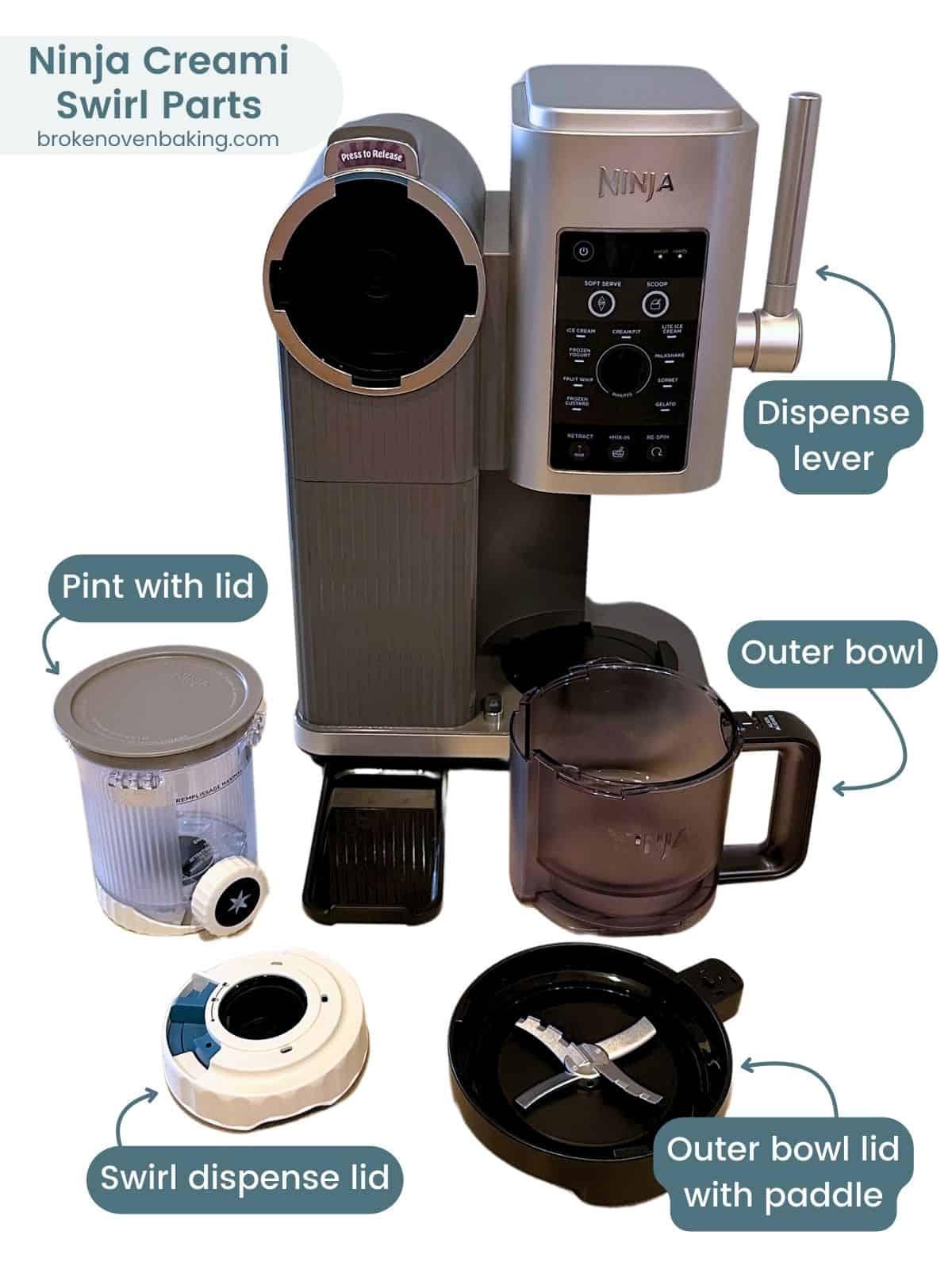
Forget the seven preset labels—only three mechanical functions exist. The machine’s real power comes from precision engineering, not program variety.
Essential Hardware Reality Check
- 4-Blade Paddle: Stainless steel micro-shaving system (handle only by center hub—edges are razor-sharp)
- Drive Axle: Transfers torque from motor; requires weekly wiping to prevent gunk buildup
- Outer Jug Bowl: Must twist upward until it clicks onto axle—misalignment causes wobbling
- Pint Containers: Max 16 fl oz fill line (21 fl oz total volume); hand-wash only—dishwasher heat warps them
Program Truths You Won’t Find in Manuals
- “Gelato” = “Ice Cream”: Both run identical 1,200 RPM cycles (marketing differentiation only)
- “Sorbet” & “Light Ice Cream”: Use 1,790 RPM for high-water/low-fat bases
- “Mix-In” Mode: Only 450 RPM—critical for folding chunks without pulverizing them
Warning: Never run Mix-In mode without creating a 1-inch well in the center first. Toppings hitting the blade will shatter into unappetizing dust.
Your 24-Hour Freeze Protocol: Non-Negotiable Steps

Skipping any step here guarantees texture failure. This isn’t a suggestion—it’s physics.
Freezer Setup Checklist
- Temperature: -10°F to -13°F (verify with standalone thermometer)
- Placement: Center of level shelf—never in freezer door where temps fluctuate
- Lid Policy: Freeze lid-off for 24 hours, then snap lid on for storage
- Fill Level: Maximum 16 fl oz (leave 25% headspace for expansion)
Why Lid-Off Matters: Trapped moisture creates a domed surface that jams the blade mid-spin. After solid freezing, add the lid to prevent freezer burn.
Spinning Sequence: Avoid These Costly Mistakes
The spin process takes 90-120 seconds, but errors here ruin perfectly frozen bases.
Lock-and-Load Mistakes That Cause Failures
- Misaligned Jug: Failing to twist until the click creates wobbling that shreds texture
- Warm Pint Handling: Holding the frozen container with bare hands melts surface crystals
- Overfilling Mix-Ins: Adding >½ cup toppings clogs the blade during Mix-In mode
Post-Spin Texture Rescue Guide
- Icy Edges: Immediately scrape sides with spoon, then Re-Spin
- Crumbly Texture: Add 1 Tbsp milk, Re-Spin once (never twice—that causes soup)
- Chalky Protein Bases: Pre-blend powder with electric frother before freezing
Pro Tip: After first spin, dip your spoon in hot water before testing texture—cold utensils freeze-contact points and mislead your assessment.
Recipe Adjustments That Prevent “Too Hard” or “Too Soft” Disasters
Traditional recipes fail in the Creami because they’re designed for 21°F soft-serve, not 14°F ready-to-eat. Recalibrate these elements:
Critical Recipe Tweaks
- Sugar: Increase by 2-4% (e.g., 18-22% for single-spin targets)
- Stabilizers: Add 0.1-0.3% xanthan gum for low-fat/protein bases
- Liquid Sweeteners: Use corn syrup (inverts sugar) for smoother texture in sugar-free versions
Time-Saver: Pre-age bases 4-24 hours in the fridge before freezing—improves flavor integration without extra effort.
Troubleshooting Your Most Common Texture Failures
Stop blaming the machine—90% of issues stem from freeze/spin protocol errors.
Grainy Ice Cream Fix
- Root Cause: Insufficient sugar or stabilizers for target temperature
- Solution: Add 2% corn syrup to base before freezing next time
- Quick Fix: Re-Spin with 1 Tbsp heavy cream (not milk—fat improves mouthfeel)
Dry, Crumbly Results Fix
- Root Cause: Over-frozen base (freezer too cold) or low water content
- Solution: Warm pint 30 seconds under hot tap before Re-Spin
- Prevention: Set freezer to -10°F (not -20°F) for optimal crystal formation
Critical Note: Never exceed two Re-Spin cycles. Each adds 37-39°F of heat—by the third spin, you’re essentially making soup.
Why Model Upgrades Don’t Change Core Functionality

Ninja markets “Deluxe” and “Swirl” models with extra presets, but physics remains identical:
| Model | Key Difference | Real-World Impact |
|---|---|---|
| Original NC300 | 7 presets | Quieter operation; ideal for home use |
| Deluxe 11-in-1 | 24 fl oz capacity | Scales recipes linearly—no texture advantages |
| Creami Swirl | Integrated mix-in spout | Prevents topping spills; no performance boost |
All models use the same blade speed tiers and require identical protocols. Save money—the NC300 delivers identical results.
Maintenance Moves That Prevent Permanent Damage
One dishwasher cycle can destroy your $200 machine. Protect your investment with these steps:
Daily Must-Do’s
- Rinse blade and jug lid under warm water immediately after spinning
- Soak lid in soapy water, using a brush in vent holes (caked-on fat causes leaks)
- Wipe drive axle with damp cloth—never submerge base unit
Monthly Deep Clean
- Soak removable parts in 1:1 vinegar/water solution for 30 minutes
- Check blade for nicks (replace if dull—serrated edges ruin texture)
- Verify freezer temp with separate thermometer
Warning: Dishwasher heat warps pint containers and permanently dulls blades. Hand-washing isn’t optional—it’s physics.
The Ninja Creami’s genius isn’t complexity—it’s respecting frozen physics. By transforming solid ice blocks through precision micro-shaving instead of traditional churn-freezing, it delivers restaurant-quality texture in 90 seconds. But skip the 24-hour freeze, ignore temperature targets, or mishandle the blade, and you’ll battle icy disasters. Master the freeze-spin protocol, recalibrate your recipes, and you’ll unlock consistent, spoonable perfection straight from your freezer. Your next pint awaits—just give it the time it needs to become magic.

